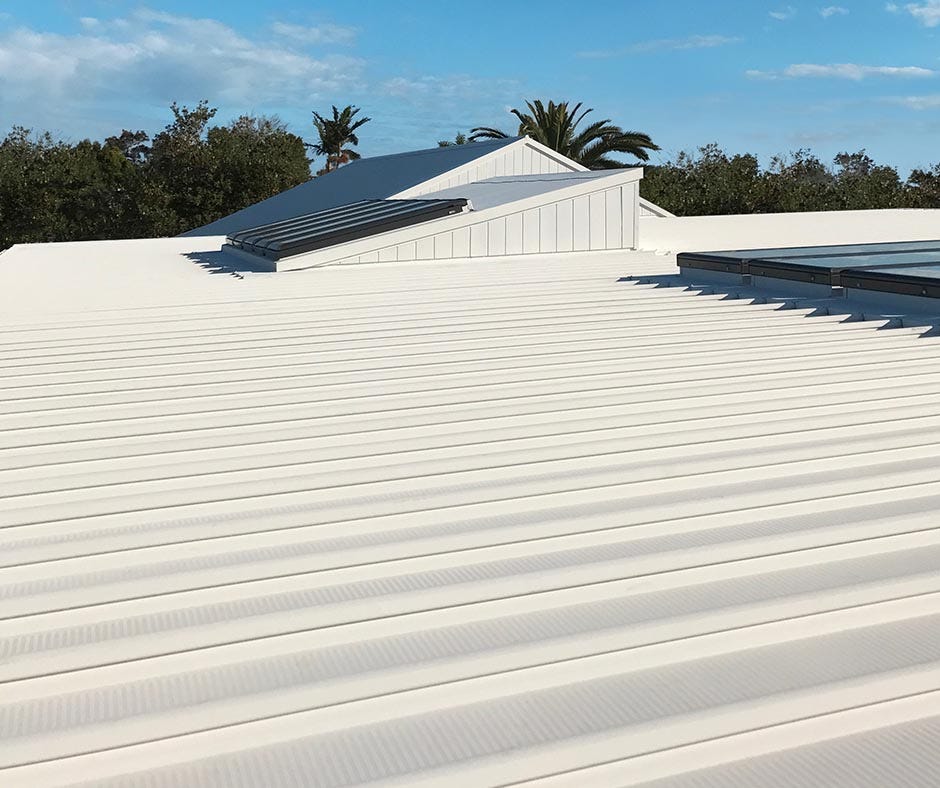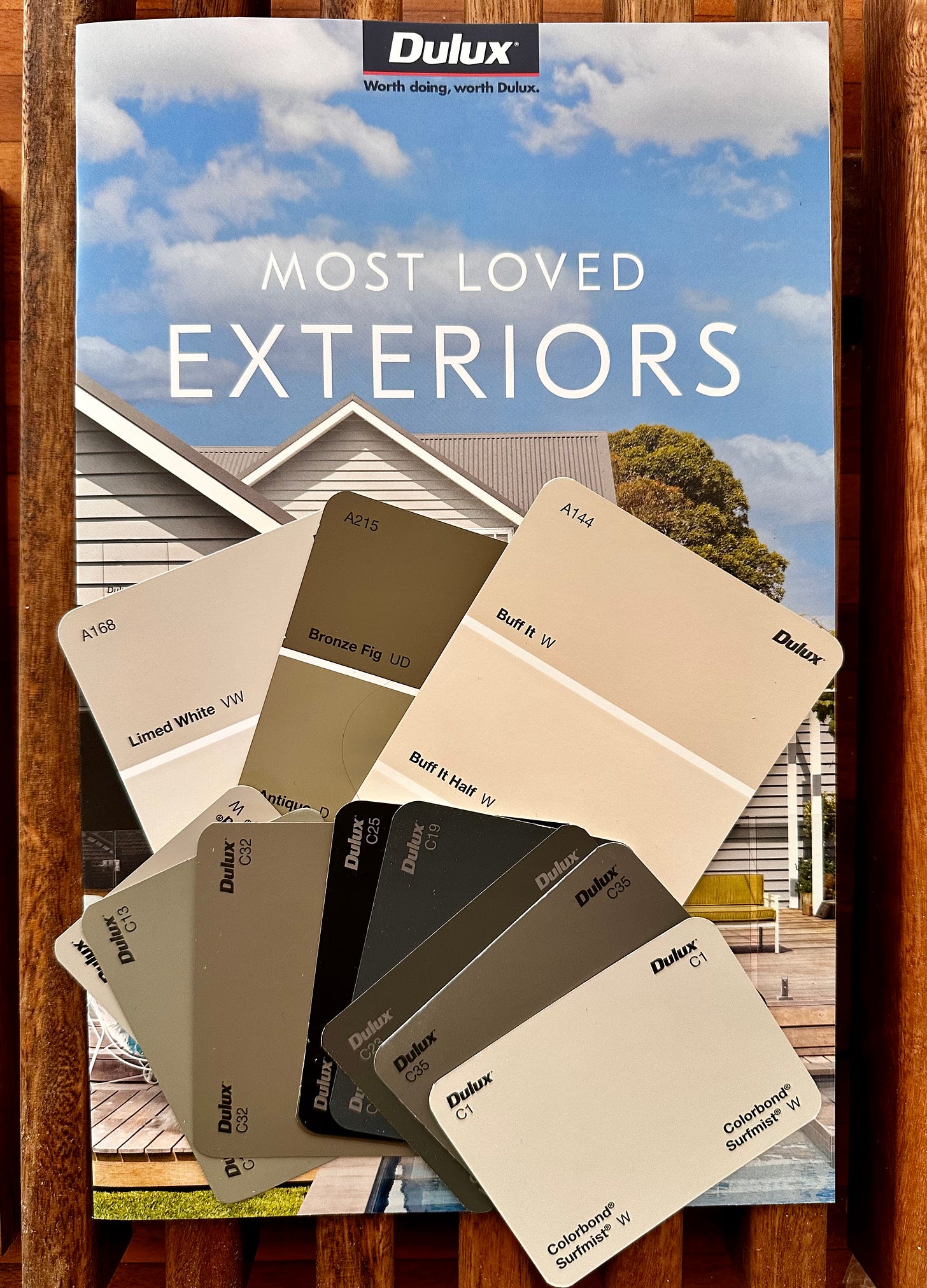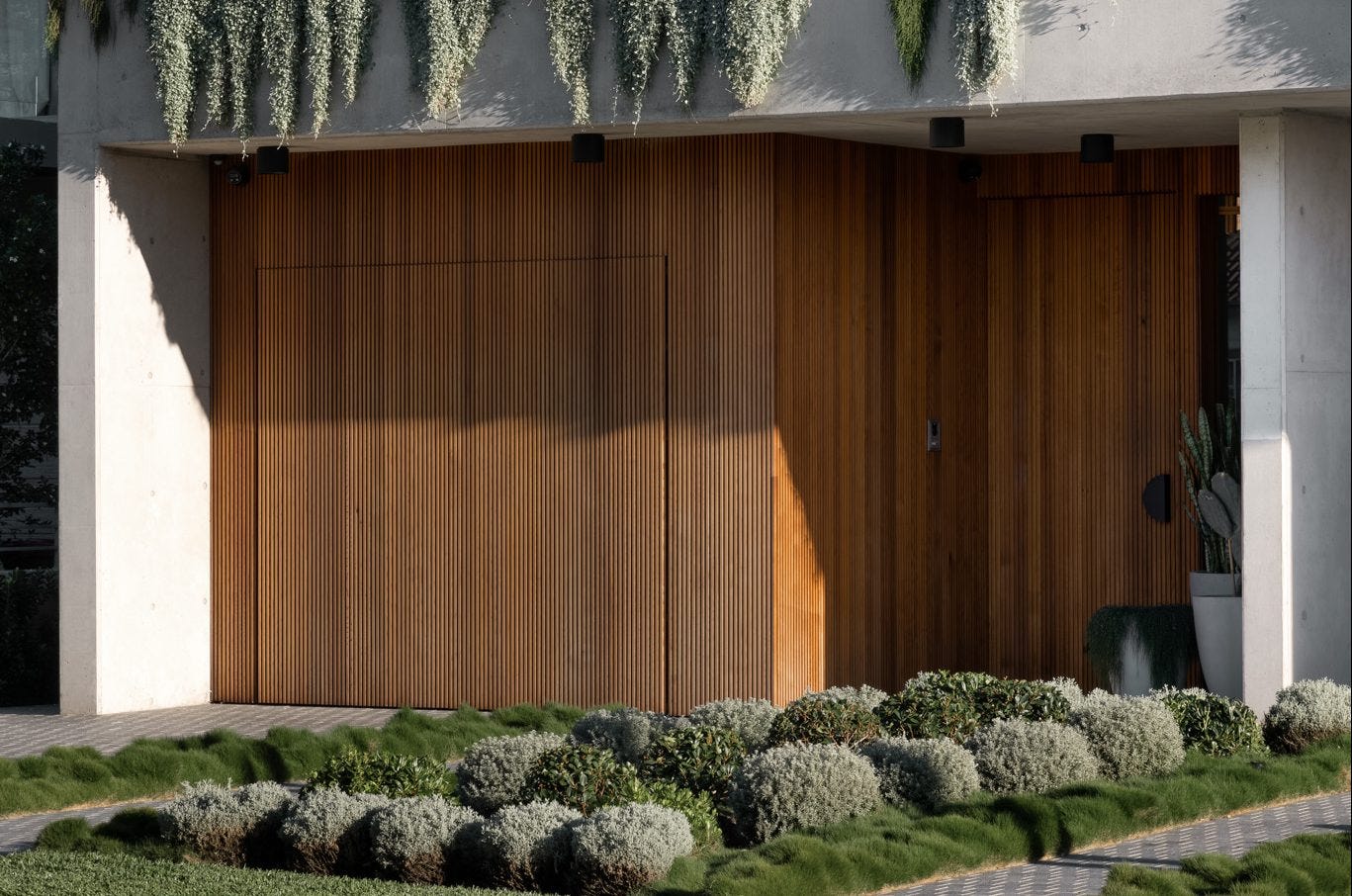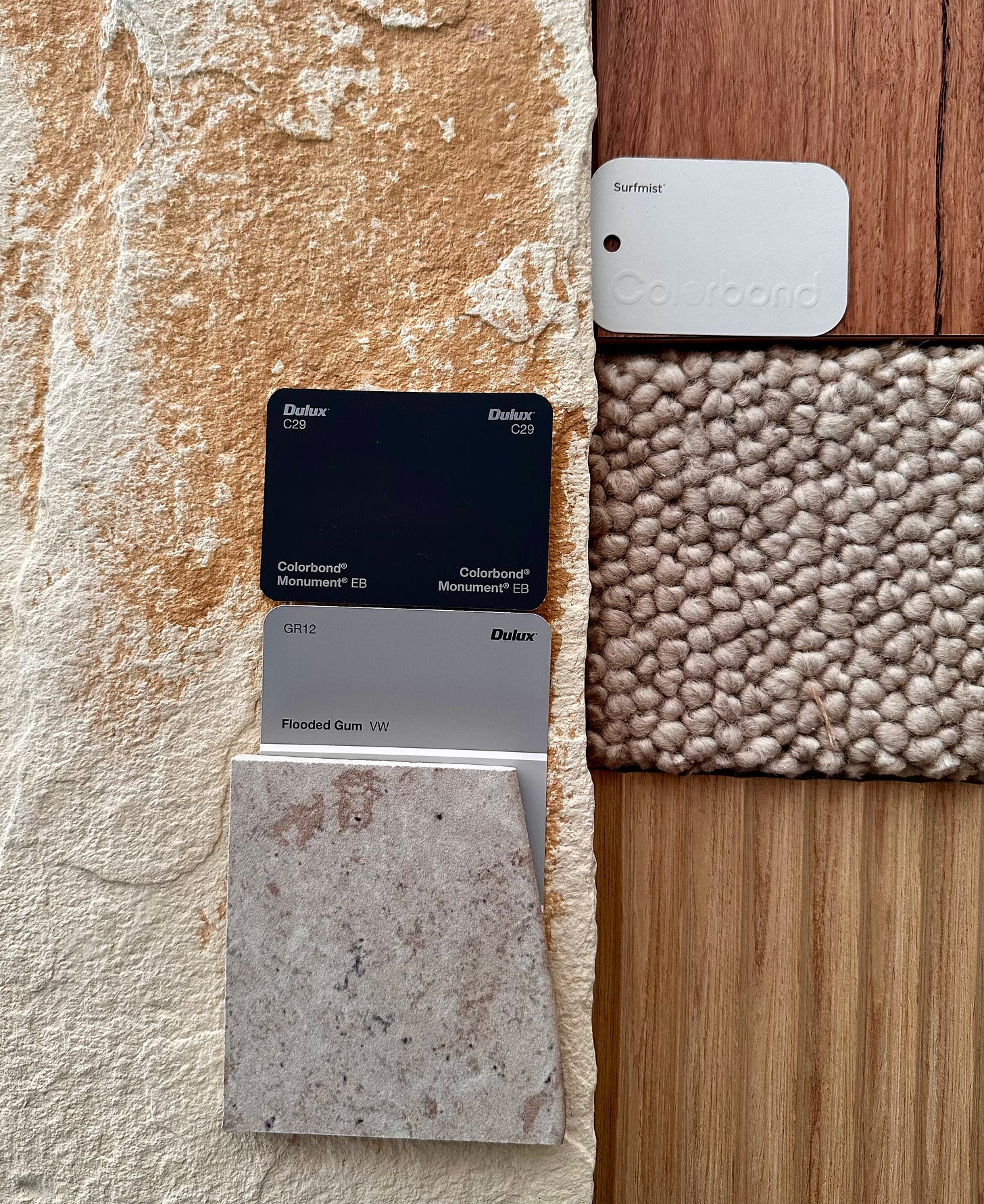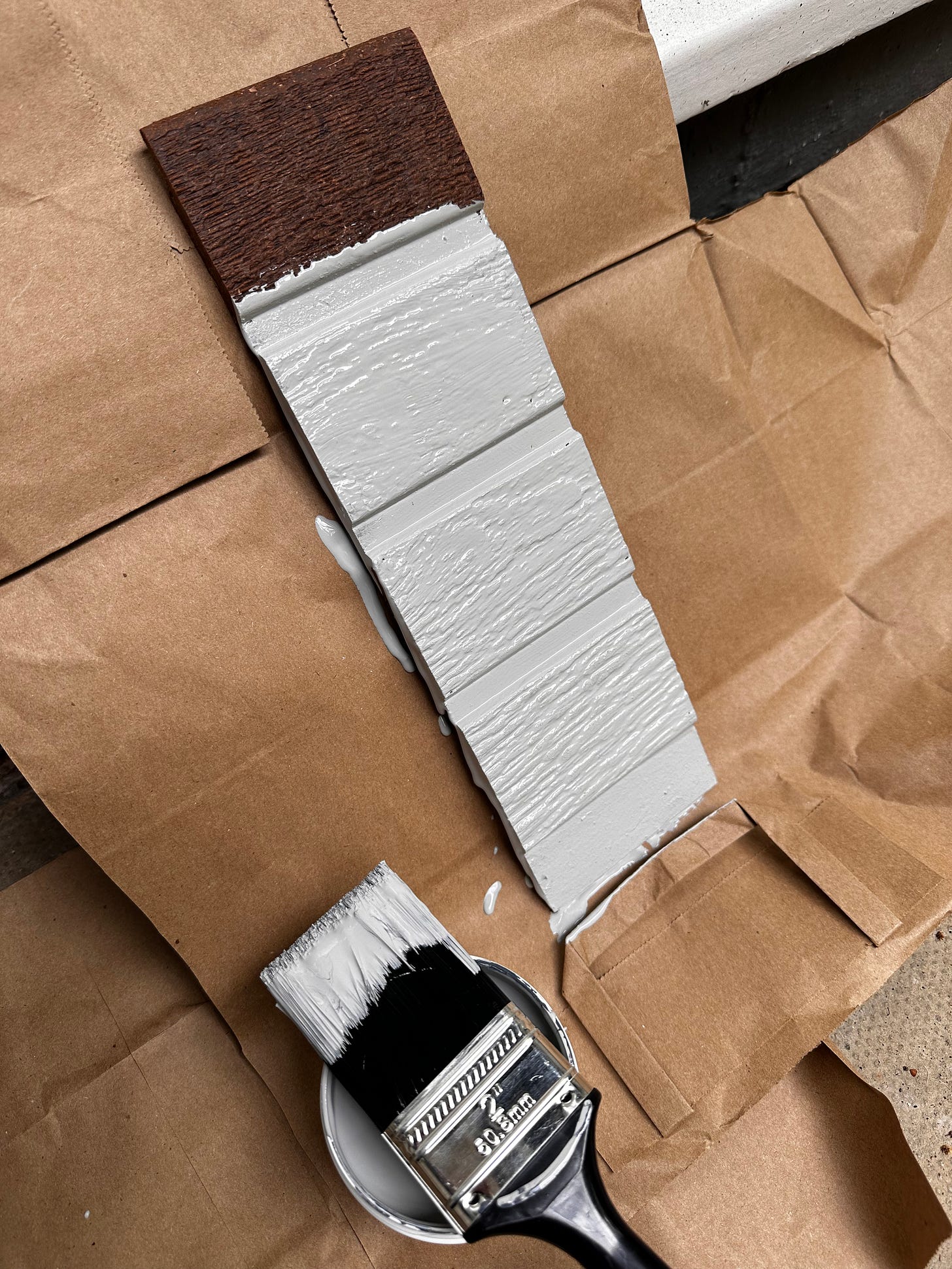With lodgement of the DA (development application) imminent, it’s time to specify the exterior cladding materials for my new house. Choices, choices.
There’s the look of it, of course, and the fireproof rating. And the cost. And long-term maintenance. But the exterior of a building is often the first thing that captures attention, creating an enduring impression. The right cladding can help a building transcend from the mundane to the extraordinary.
Not my house, but beautiful, no? [source]
Quotes below are from this ArchiPro article from 2021, which weighs it all up.
What will it cost?
Cladding costs per square metre (or sometimes linear metre) can vary hugely given the wide varieties of cladding materials that are available on the market. Even within the same type of cladding material (like timber) you’ll find options priced at both sides of the spectrum.
For example … Weatherboard cladding can range from $3.20 for a linear metre of baltic square edge to $28.75 for a 4.2 metre length of smooth HardiePlank.
Metal cladding Metal can be another step up in material cost when compared to timber. Aluminium cladding as a basic sheet can be priced at around $14.00 per metre and go up to $30 per square metre for corrugated cladding.
Colorbond?
Colorbond® is a brand name, famous for Australian roofs across the nation. COLORBOND® steel is pre-painted steel. The painting complies with AS/NZS 2728, and the steel base is an aluminium/zinc/magnesium alloy. [source]
A roof of Colorbond® ‘Surfmist’ [source]
What about maintenance?
The cheapest cladding choice at the start might not be the cheapest in the long term. Sheet steel is considered the cheapest option when weighing up lifetime costs, followed by sheet plywood. PVC, fibre cement and timber weatherboards are the more expensive options.
Cost-effectiveness however is also influenced by the value a cladding brings or increases in a home. More costly and durable claddings are more likely to increase the value of a property providing a greater return on investment than cheaper alternatives.
Life expectancy?
Interestingly, there is a surprising range when it comes to lifespans for different cladding materials. Corrugated steel cladding comes in the lowest, at around 20 years while at the other end of the scale, clay brick or concrete cladding is likely to last up to 80 years.
When maintenance costs are considered, however, corrugated steel remains a cost-effective option, at between $3 and $7.90 per square metre, as opposed to fibre cement weatherboards, which may last up to 40 years, but when considering lifetime costs, fall between $11 and $15 per square metre.
How about aluminium cladding?
Aluminium cladding is a highly durable, corrosion-resistant material that is roughly a third of the weight of steel. Its large wall cladding panels require fewer joints making it more efficient to install. This has made it one of the most used building materials in Australia in recent times. It is also completely recyclable giving it great sustainability credentials.
It’s also an extremely flexible metal making it a great choice for architects keen to showcase a bit of design flair. This makes aluminium a great investment with respect to lifespan value for money and aesthetic appeal.
Isn’t brick best?
Brick has a great reputation as a timeless classic that’s been used extensively throughout the world for many years. It is very low maintenance and is considered one of the most durable types of cladding there is. It is indeed one of the most cost-effective options across its lifetime.
Is brick best? [source]
Mix & Match
We’re considering a combo for the new house at Normanhurst: sandstone veneer, earthenware bricks, steel or aluminium cladding, and some touches of engineered wood, painted a tasteful colour. And some dark lines for the windows, the fascia and the gutters which edge the roofline.
When it comes to aluminium cladding, I’m happy to go for ‘timber look’—probably in blackbutt or spotted gum. There are some who aren’t fans of finishes which mimic natural materials, but—like the mid-century modern architects—I’m keen on the idea of newly-engineered materials which can be more environmentally-friendly. It’s great to find clever ways of bringing in the look & feel of natural materials without the expense. Plus—there will obviously be very little wood on the exterior of my house because of the bushfire risk. Modinex has some amazing-looking products made of aluminium.
This is aluminium. From Modinex®
Colour & texture
When it comes to the colour palette, I’m keen to keep it light. A light roof will reflect the heat of the sun and a lighter-coloured house overall will be cooler, and so more energy efficient. That’s my theory.
By combining exterior materials, we’ll give the house character and interest. The sandstone is the anchor, for both colour and texture. Adding wood and metal will lighten the bricks.
Current wish-list:
Roof: Colourbond® coated steel in ‘Surfmist’
Bricks: Austral® ‘Sculptured Sands’ or ‘Natural Beach’ or equivalent
Engineered weatherboard: painted Dulux® ‘Flooded Gum’ or similar
Feature walls: veneer stone in sandstone
Aluminium Cladding: Timber-look, non-combustible, blackbutt or similar
Plus Colorbond® ‘Monument’ on the windows, fascia and gutters, wood-look metal for the privacy screens, timber-look finish to the soffit lining (the underside of the eaves), a timber-look metal garage door, and—the pièce de résistance—a good solid wood entrance door!
I’ve been sending off for samples. Hmm …
Many decisions!
I’m happy with this vision. Now to bring it to reality.
Testing. Paint sample of Dulux® ‘Flooded Gum’ on sample of Weathertex® engineered weatherboard.





